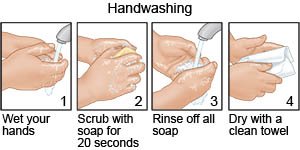Tinea Capitis
Medically reviewed by Drugs.com. Last updated on Mar 10, 2025.
What is tinea capitis?
Tinea capitis is a scalp infection caused by a fungus. Tinea capitis is also called ringworm of the scalp or head. It is most common among children 3 to 9 years old.
What increases my risk for tinea capitis?
Tinea capitis is spread by close contact with an infected person or pet. Your risk is increased if you share towels, hairbrushes, combs, barrettes, and hats with an infected person.
What are the signs and symptoms of tinea capitis?
- Hair loss
- Raised, scaly skin
- Itchy scalp
- Black dots on the scalp from broken hairs
- Small, round bumps
How is tinea capitis diagnosed?
Your healthcare provider may be able to tell that you have tinea capitis by looking at your scalp. Your provider may also look at a skin sample through a microscope. This will help find the type of fungus that is causing your infection.
How is tinea capitis treated?
Tinea capitis is usually treated with antifungal medicine. It is given as a pill. Take the medicine until it is gone, even if your scalp looks better sooner. Your healthcare provider may also recommend an antifungal cream.
Treatment options
The following list of medications are related to or used in the treatment of this condition.
How can I prevent tinea capitis?
- Use antifungal shampoo as directed. Use a clean towel each time you wash your hair. Do not scratch your scalp. This may cause the infection to spread to other areas of your scalp. If your child has an infection, he or she can go to school when he or she is using medicine and shampoo regularly.
- Do not share personal items. Do not share towels, brushes, combs, or hair accessories.
- Wash items in hot water. Wash all towels, clothes, and bedding in hot water. Use laundry soap. Wash brushes and combs, barrettes, and hats in hot, soapy water.
- Keep your skin, hair, and nails clean and dry. Wash your hands often.

- Have infected pets treated by a veterinarian. A patch of missing fur is a sign of infection in a pet. Wear gloves and long sleeves if you handle an infected animal. Always wash your hands after handling the animal. Vacuum your home to remove infected fur or skin flakes. Disinfect surfaces and bedding that your animal contacts.
When should I call my doctor?
- You have a fever.
- Your infection continues to spread after 7 days of treatment.
- Other areas of your scalp become red, warm, tender, and swollen.
- You have questions or concerns about your condition or care.
Care Agreement
You have the right to help plan your care. Learn about your health condition and how it may be treated. Discuss treatment options with your healthcare providers to decide what care you want to receive. You always have the right to refuse treatment. The above information is an educational aid only. It is not intended as medical advice for individual conditions or treatments. Talk to your doctor, nurse or pharmacist before following any medical regimen to see if it is safe and effective for you.© Copyright Merative 2025 Information is for End User's use only and may not be sold, redistributed or otherwise used for commercial purposes.
Learn more about Tinea Capitis
Treatment options
Further information
Always consult your healthcare provider to ensure the information displayed on this page applies to your personal circumstances.
